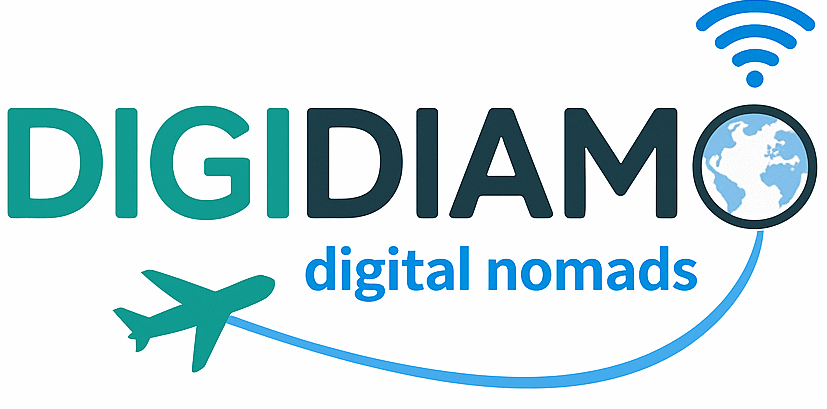Remote jobs for digital nomads: secure a salary in 2026
Holding a fixed paycheck once meant commuting before sunrise and clocking out long after sunset. Today you can earn that same salary while eating mango sticky rice in Chiang Mai or watching Atlantic waves roll onto the shore at Dakhla. Companies have relaxed borders around talent because results matter more than badge scans. If you want an overview of every income stream on the move, my full roadmap to making money as a digital nomad breaks down the bigger picture. Here we focus on landing and keeping a remote role that funds your travels without the feast-or-famine cycle of pure freelancing.

Why employers embrace remote hires
Hiring online cuts office costs yet opens doors to diverse time zones. Managers see round-the-clock work cycles as a competitive edge. A developer in Bogotá pushes a feature at dusk, a tester in Manila checks it at dawn, and the product owner wakes to a finished sprint. Lower overhead plus broader talent wins shareholder approval, so remote roles keep multiplying even after offices reopen.
The five remote job models
1. Fully distributed companies
These firms never owned a headquarters. Think GitLab or Buffer. Policies, culture docs, and monthly all-hands run in tools like Notion and Zoom. Salaries often follow a location-based band but perks offset gaps: home-office stipends, wellness allowances, company retreats. Apply by demonstrating async writing skills because they value written clarity over meeting charisma.
2. Remote-first hybrids
A headquarters still exists yet attendance is optional. HubSpot and Shopify fall here. You can work from Lisbon while teammates drop into Toronto twice a quarter. Expect timezone overlap rules often four hours daily to ease collaboration. Compensation nudges toward mid-market averages rather than Silicon Valley peaks, making cost-efficient destinations attractive.
3. Satellite teams
Global brands spin up regional pods for support, marketing, or dev work. Hours align with target customers, so roles may require night shifts if you roam far from the user base. Ask during interviews how they handle shift swaps for people crossing continents.
4. Contractor agreements
Some firms classify remote staff as independent contractors to skip payroll complexity abroad. They pay monthly invoices via platforms like Deel or Remote. Benefits shrink yet gross rates rise, letting you choose private insurance and pension plans. Keep receipts for tax season.
5. Part-time retainer roles
Start-ups buy twenty hours a week of a specialist’s time. Income steadies while you pursue side gigs. Retainers suit marketers and designers whose deliverables arrive in weekly cycles.
Where to find reliable listings
- We Work Remotely: Curates tech, support, and product jobs. Filters by time zone.
- Remote OK: Flags pay transparency, VISA sponsorship, and async culture spots.
- FlexJobs: Screens listings to weed out scams. Paid membership worth avoiding fake posts.
- Oyster Talent Marketplace: Connects firms already using Oyster for compliance less red tape.
- LinkedIn keyword alerts: Combine “remote” with your title plus boolean operators. Referrals still dominate platform hires.
Crafting a timezone-proof résumé
Recruiters skim first. Lead with outcome-based bullets:
- Scaled paid ads to USD 500k monthly while cutting CAC by 18 percent
- Refactored legacy codebase, slashing page load from 3.2s to 1.1s
Add a single line on self-management tools: “Async workflows via Notion, Loom, and Slack.” It signals you won’t wait for water-cooler guidance.
Interview tactics that highlight remote fitness
- Screen share environment: A clean desk, stable webcam, and clear mic prove professionalism.
- Narrate past async wins: Explain how you moved blockers without meetings.
- Ask process questions: “How does the team document decisions?” Good sign if they mention a handbook.
- Clarify hours and hand-offs: Misaligned overlap sinks morale fast.
Negotiating salary beyond geography
Some companies peg pay to cost of living indexes. Others pay uniform global bands. Use ranges from sites like Levels.fyi as a baseline then frame your ask around measurable impact, not rent prices. Suggest performance-based bonuses quarterly KPIs or profit sharing to bridge gaps.
Example script
“I’m targeting a base of USD 78,000 for this role, tied to my track record improving activation by double digits. I’m open to structuring part of that as quarterly milestone bonuses aligned with user growth.”
Taxes, visas, and paperwork
- Employer of record: Platforms like Remote act as your legal employer in many countries, handling tax remittance.
- Digital nomad visas: Portugal, Croatia, and Mexico offer year-long stays if you meet income thresholds.
- Self-employed status: If paid as a contractor, set aside 25–30 percent for taxes plus health premiums.
- Double taxation treaties: Morocco, Canada, and dozens more have agreements that prevent paying income tax twice; consult a specialist before departure.
Building routine on the road
- Anchor hours: Fix four hours daily for deep work, same local slot everywhere.
- Workspace checklist: Desk height, strong Wi-Fi, natural light, and quiet zone. Test coworking spaces before committing.
- Health front-loading: Schedule workouts early because evenings fill with exploration.
- Social rhythm: Join local Slack or WhatsApp groups to replace office banter.
Transition pathways from freelancing
If you already freelance, leverage client testimonials to pivot into staff roles. Highlight consistency: “Delivered 42 weekly newsletters on schedule across nine months.” Mention cross-cultural collaboration, time-zone juggling, and self-directed research. These traits map directly to remote job success metrics.
Case snapshot
I once balanced three freelance retainers while exploring Southeast Asia. One client grew enough to justify a full-time position. Because I knew their product and culture, onboarding took a single sprint and my pay jumped forty percent. The lesson: treat every gig like a long interview.
Sustaining career growth remotely
- Skill sprints: Dedicate two weeks each quarter to upskill course, certification, or side project.
- Mentor circles: Pair up with peers via platforms such as GrowthMentor. Shared screen sessions accelerate learning more than solo tutorials.
- Public portfolio: Blog or LinkedIn posts about challenges overcome showcase leadership without in-house hallway chatter.
Common pitfalls and how to sidestep them
- Overlapping commitments: Two roles in similar time blocks drain energy. Stagger or decline.
- Isolation spiral: Schedule face-to-face coworking days or nomad meetups to reset.
- Scope creep in contractor setups: Set weekly check-ins and documented task lists.
- Ignoring local laws: Some countries fine visitors working on tourist visas; get correct permits.
Final thoughts
A remote salary blends the stability of a paycheck with passport freedom. Treat applications as mini consulting proposals, write crisp async updates, and align your body clock with critical meetings. The rest is discipline and a strong Wi-Fi signal.
Curious about turning your expertise into a self-owned venture later on? Explore profitable digital nomad business ideas to map that next step.






